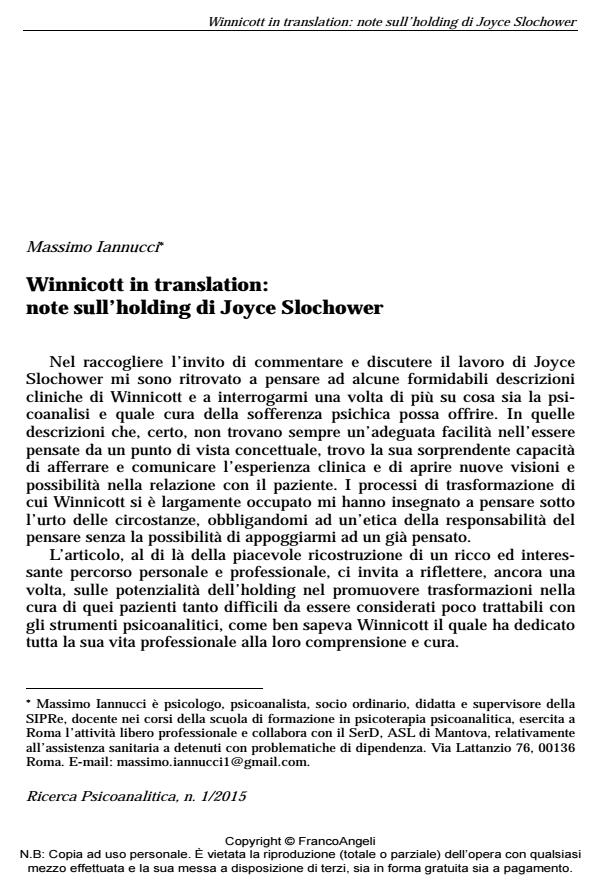Winnicott in translation: notes on holding by joyce slochower
Journal title RICERCA PSICOANALITICA
Author/s Massimo Iannucci
Publishing Year 2015 Issue 2015/1
Language Italian Pages 12 P. 33-44 File size 64 KB
DOI 10.3280/RPR2015-001003
DOI is like a bar code for intellectual property: to have more infomation
click here
Below, you can see the article first page
If you want to buy this article in PDF format, you can do it, following the instructions to buy download credits

FrancoAngeli is member of Publishers International Linking Association, Inc (PILA), a not-for-profit association which run the CrossRef service enabling links to and from online scholarly content.
Starting from Schlochower’s interpretation of the concept of holding in relational terms, the article tries to illustrate the potential of holding in promoting changes in the treatment of patients that are difficult to treat with traditional psychoanalytical tools. This seems possible when the analyst’s subjectivity is used to provide an emotional environment capable of creating the conditions for metaphorizing unexpressed experiences in a process of mutual regulation. A few situations are described where the patient is unable to use the analyst as a subject; situations where the analyst’s capacity for being available for the patient’s needs can proceed in different ways, as in Mark’s case when what is activated through holding is a process of detoxification of shame.
Keywords: Winnicott, holding, subjectivity, shame, mutual regulation, self-containment
Massimo Iannucci, Winnicott in translation: note sull’holding di Joyce Slochower in "RICERCA PSICOANALITICA" 1/2015, pp 33-44, DOI: 10.3280/RPR2015-001003